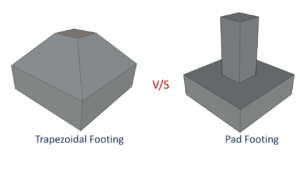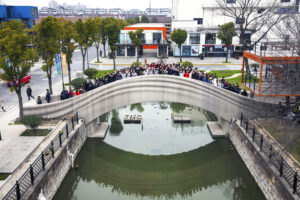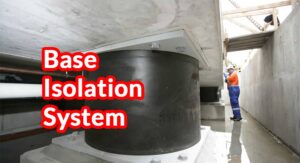
Types of Defects in Timber as a Construction Material

What is Timber?
Timber is a type of wood used to construct civil engineering structures. It is generally used for the construction of temporary structures. Timber can be formed in any shape, like beams, planks, columns etc. The strength and classification of timber depending on the type of trees from which it is formed, So let’s understand the different types of trees.
In general, the defects in timber are mainly due to:
- Fungi
- During Seasoning
- Natural forces
- During conversion
- Insects
Defects in timber due to Fungi
- Dry rot
- Wet rot
- Brown rot
- White rot
- Blue stain
- Heart rot
- Sap stain
1. Dry Rot in Timber
Dry rot is caused by a certain type of fungi that eats wood for their living. They make food by converting timber into dry powder form. This occurs mainly when there is no ventilation of air or if the wood improperly seasoned. Absence of sunlight, dampness, presence of sap will increase the growth of dry rot, causing fungi. This can be prevented by using well-seasoned wood and also by painting the timber surface with copper sulfate.

2. Wet Rot in Timber
Wet rot is caused by fungi that decompose the timber and convert it into a grayish-brown powder form. Wet rot causing fungi growths mainly when there are alternate dry and wet conditions of timber.

3. Brown Rot in Timber
The cellulose compounds of the wood are consumed by certain types of fungi, which then makes the wood brownish, and this defect is called brown rot.

4. White Rot in Timber
Some types of fungi attack lignin of timber and leaves cellulose compounds; hence the wood will turn into white color, which is called white rot.

5. Blue Stain in Timber
Blue stain is a defect caused by some kind of fungi, which makes the timber bluish.

6. Heart Rot in Timber
Heart rot is generated in the trees when fungi attack the heartwood through its newly formed branch. This type of fungi makes the tree hollow by consuming heartwood. This defect is known as heart rot.

7. Sap Stain in Timber
When the moisture content in the timber is more than 25%, some types of fungi attack the sapwood and make it discolored. This type of defect is known as a sap stain.

Defects in Timber During Seasoning
- Bow
- Cup
- Check
- Split
- Twist
- Honeycombing
- Case hardening
- Collapse
- Warp
- Radial shakes
1. Bow
When the converted timber is stored for a longer time, some timber planks may have a curve along its length, which is known as Bow.
2. Cup
If the timber planks curve along its width, then it is called Cupping of timber.

3. Check
Check is the formation of a crack in the wood, which will separate the wood fibers. They form due to over seasoning of timber.

4. Split
Split forms when a check extends from one end to the other end, which will split the wood into a number of pieces.
5. Twist
Twist forms when the timber piece is distorted spirally along its length. It looks like a propeller blade after
twisting.
6. Honeycombing
Honey combing occurs in the inner part of the timber, which cannot be identified by just seeing. It is mainly due to stresses developed during the drying of timber.

7. Case Hardening
Case is nothing but the top surface of wood, which dries rapidly during seasoning, but the inner part didn’t. Then this defect is called as case hardening.

8. Collapse
During drying, some parts of the wood may dry rapidly while some may not. Because of this, improper drying shrinkage of wood occurs, that results in the defect called collapse.

9. Warp
Warping is the loss of shape of wood due to stresses developed during drying. Cupping bowing, twisting of wood come under warping.

10. Radial Shakes
Radial shakes develop after the tree being felled down and exposed to the sun for seasoning. In this case, the cracks run radially from bark to the pith through annual rings.

Defects in timber due to Natural Forces
Wind cracks
Shakes
Twisted fibers
Upsets
Rind galls
Burls
Water stain
Chemical stain
Deadwood
Knots
Coarse grain
Foxiness
Druxiness
Callus
1. Wind Cracks in Timber
If the wood is exposed continuously to the high-speed winds, the outer surface shrinks and forms crack externally, which are called wind cracks.

2. Shakes in Timber
Shakes are nothing but cracks which separate the wood fibers partly or completely. Different shakes are formed in different conditions as follows:
Cup shakes are formed due to the non-uniform growth of a tree or excessive bending by cyclones or winds. In this case, the shakes develop between annual rings and separate them partly.
Heart shakes, the other type of shakes which develop in maturity approaching trees whose inner part is under shrinkage. The shake spread from pith to sapwood following the directions of medullary rays.
Ring shakes are similar to cup shakes, but they completely separate the annual rings.
Star shakes are formed due to extreme heat or severe frost action. They develop wider cracks on the outside of timber from bark to the sapwood.
Radial shakes are developed radially from pith to the bark.

3. Twisted Fibers in Timbers
When the tree in its younger age is exposed to high-speed winds, the fibers of wood gets twisted. This type of wood is not suitable for sawing. So, this can be used for making poles, posts, etc.

4. Upsets
Upsets, a defect of timber in which the fibers of the wood are crushed and compressed by fast blowing winds or inappropriate chopping of trees.

5. Rind Galls
Rind galls are curved swellings of trees which are formed at a point where a branch of the tress is improperly removed or fell down.

6. Burls
Burls are uneven projections on the body of the tree during its growth. These are mainly due to the effect of shocks and injuries received by the tree during its young age.

7. Water Stain
When the wood is in contact with water for some time, the water will damage the color of the wood and forms a stain on its surface. This defect is called as water stain.

8. Chemical Stain
Chemical stain is formed on the wood by the action of any external chemical agents like reaction by the gases present in the atmosphere etc. The stain area gets discolored in this defect.

9. Dead Wood
The wood obtained from the cutting of the dead tree is light in weight and is actually defected. It is reddish in color and its strength is very less.

10. Knots in Timber
The central part or stem of a tree is majorly used in the conversion of timber. Branches from the stem are removed, and the whole rounded stem is taken. But the base of branches forms a mark on the stem, which results in dark-colored stains on the surface after conversion. This dark-colored stains are due to the continuity of wood fibers. These dark-colored rings are known as knots.

11. Coarse Grain Defect in Timber
The age of a tree can be known by the number of annual rings. For fast-growing trees, the gap between the annual rings is very large. This type of tree is called as coarse-grained tress, and timber obtained from them is of less strength.

12. Timber Foxiness
When the timber is stored without proper ventilation, the trees growing near the banks of water bodies and over matured trees may exhibit this type of defect. Foxiness is generally indicated by red or yellow spots.

13. Druxiness
Druxiness is a defect of timber in which the top surface of timber indicates white spots. These spots will give the access to fungi.

14. Callus
The wound of the tree is covered by soft skin, which is called a callus.

Defects in Timber During Conversion
Diagonal grain
Torn grain
Chip mark
Wane
1. Diagonal Grain Defect in Timber
During the conversion of timber, different cutting saws are used. The cutting should be done properly. If there is any improper cutting by the saw, then a diagonal grains will appear.

2. Torn Grain
In the conversion, many tools are used. If any of the tools or any other heavy things are dropped accidentally on the finished surface of timber it will cause small depression, which is called torn grain.

3. Chip Mark
When the timber is cut through the planning machine, the parts of the machine may form chip marks on it. Usually, they are indicated by chips on the finished surface.

4. Wane
The edge part of the timber log contains a rounded edge on one side because of its original rounded surface. This rounded edge is called wane.

Defects in timber due to Insects
Termites
Beetles
Marine borers
1. Termites in Timber
Termites also known as white ants which form a colony inside the timber and eat the core part of the timber rapidly. They do not disturb the outer layer of timber, so one cannot identify their presence. The trees in tropical and sub-tropical regions are mostly affected by these termites. However, some trees like teak, Sal, etc. cannot be attacked by termites because of the presence of termite preventing chemicals in their cellulose part.

2. Beetles in Timber
Beetles are a type of insects that destroy the sapwood of the tree and make a tunnel-like hole from the bark. Usually, the diameter of the hole is around 2 mm. They convert sapwood into powder form, and larvae of these beetles use these holes. Almost all hardwood trees can be prone to damage by these beetles.

3. Marine Borers in Timber
Marine borers are found near coastal areas. They do not consume wood, but they make large holes of diameter up to 25mm in the timber to live inside it. They excavated up to 60mm deep in the wood. The wood attacked by marine borers is of less strength and discolored. They can attack all types of trees present in their region.








